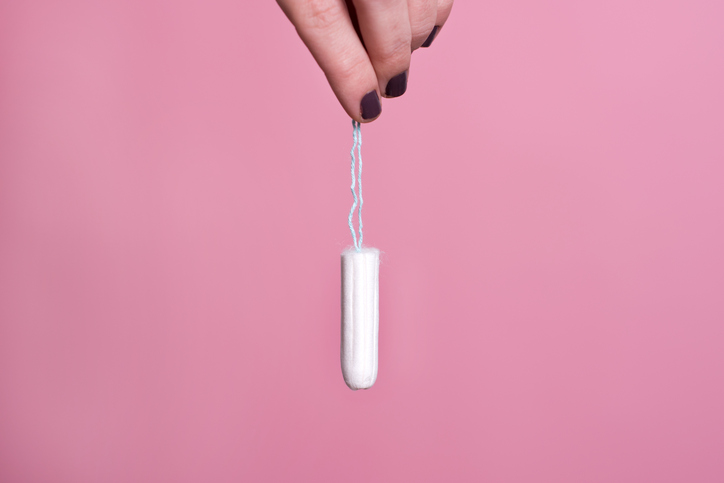Hit a plateau and feeling worn out? Here are 5 signs of overtraining you need to look out for from personal trainer Nicolas Polo
If you’re reading this it’s likely you’re interested in fitness and have heard a million times before the long list of benefits that come with exercising. So how can anyone do too much of it? Exercise is supposed to make you feel healthier, stronger and full of energy to go on with your day. But if you are working out too much or too often and not feeling energised as a result, there’s a good chance you need to take time out or change what you’re doing.

By definition, overtraining means training too long or too hard without proper recovery. Overtraining Syndrome is where the body reaches a state of fatigue and burnout caused by vigorous training without sufficient rest. The results? Chronic exhaustion, aching body, lack of energy and progress, poor mood and sometimes even depression. This is not to be confused with the overreaching syndrome where training is hard but there is sufficient recovery time making all these side effects not evident.
Is overtraining different for women than men?
Overtraining can affect both women and men. As women are built hormonally differently to men, the side effects of from overtraining can sometimes be different. A classic example would be a woman who loses more weight while on holiday doing no exercise and still having a glass or two, compared to when she is back home juggling a million things and training five times a week.
A classic example would be a woman who loses more weight while on holiday doing no exercise , compared to when she is back training five times a week
‘Female Athletic Triad’ is a syndrome in which low energy, amenorrhoea (an abnormal absence of your period) and decreased bone mineral density are present. It is caused by energy deficiency; An imbalance between the amount of energy consumed and the amount of energy expended during exercise. As a result, our body gets drained and stressed and our ‘fight or flight’ response is activated releasing chemicals like adrenaline and cortisol in our bloodstream. The bad news? Irregular menstrual cycle, insomnia, halted progress and hormonal related symptoms including in some cases inability to lose weight.

A good example for understanding overtraining is to think of long distance running. It is not difficult to imagine a runner who finished a tough race want to jump right back to intense training without allowing sufficient period for recovery. Not allowing sufficient time for recovery will lead to overtraining. Runners, however, are not the only people who can experience overtraining. Overtraining can easily occur to any other athlete or gym rat regardless of whether they lift weights, do HIIT, attend spin classes or mix it all up. A study found that approximately ten per cent of elite athletes have experienced overtraining in their careers but similar figures can be found in non-professional fitness buffs too.
5 signs of overtraining
There is no specific test for diagnosing overtraining. We have to look for physical as well as behavioural symptoms. The symptoms affect the muscular, nervous, cardiovascular, immune, skeletal and endocrine (controlling reproduction, metabolism, sleep and sex drive) systems. Although there are many symptoms to look for, here are five that are easier to spot and fitness experts and coaches monitor when training athletes and clients that follow regimented fitness programmes:
1. Halted progress
If you find yourself constantly training or training too hard it’s because you are anxious to meet your goal. That goal could be losing weight, building muscle, running a marathon or anything else. However if you are doing the time and not seeing the results you could be overtraining or experiencing, as experts call it, the Unexplained Underperformance Syndrome (UPS).
if you don’t see progress after spending hours every week pounding on the gym floor, then you could be overtraining
The subject of overtraining is sensitive among those who frequent the gym. If exercise is your life then the last thing you want to hear is that you train too much. But if your progress is halted that should hopefully get your attention. Stand in front of the mirror in a bikini and take a shot with your mobile phone. Then turn to the side and take another. Track your progress and do the same in two months’ time to compare. If you see progress, you feel healthy and you are full of energy, then you are doing fine. But if you don’t see progress after spending hours every week pounding on the gym floor, then you could be overtraining.
Hormonal changes
Overtraining will push your hormones outside their normal levels. The extent may vary from person to person depending on other possible external stressors which could intensify the symptoms like stress from work, problems at home, poor nutrition, etc. Your fitness coach or an endocrinologist (a specialist in hormones) are most likely to look for signs across the spectrum including your cortisol, testosterone and catecholamine levels which are the hormones affected by overtraining. On the other hand, while there seems to be no direct link between overtraining and white blood cell count, a below-normal-level result may suggest your body’s fighting an infection caused by a weak immune system – possibly caused by overtraining.

Another sign to look for is your menstrual cycle. It is common for women who overtrain to experience irregular or even ceased cycles. The good news here is that the symptom is usually temporary and in most instances, normal function will resume once the overtraining stops and the body recovers.
Aches and pains
This should be an easy one to spot assuming you perform your exercises correctly. There is nothing wrong with feeling sore after a gruelling workout once in a while. Some of us do actually enjoy that kind of pain. Better sore than sorry as they say. However, if you constantly feel sore and have pains in your muscles and joints, then you are overtraining.Take the pain that comes after a heavy leg session. We all know to give our legs a good long break after leg day. But the same should be the case with all other muscles.
Poor sleep pattern or in some cases insomnia is another symptom that is often linked with overtraining
Distance running is another good example of overtraining. Endurance athletes often become subjective to the condition due to the volume of the exercise. Lack of proper rest during an exercise or between events will lead to constant joints and muscle pains. Research has shown that about 65 percent of elite runners have experienced overtraining at some point of their running career so train wisely. Overtraining is an imbalance between exercise and recovery. Training the same muscle group while it’s still sore will not allow the muscles to properly recover and grow. Exerting more effort becomes counterproductive as no recovery time means, no progress and often injury.
Lack of energy and post workout tiredness
Not everyone jumps up and down full of joy on their way to the gym. But most of us are familiar with the good post workout feeling that comes after a good session. It’s probably one of the best things about exercising. If that good feeling is not there, your body feels exhausted, sluggish and your brain is drained and unfocused then it is probably time to take five. Exercise is supposed to make us feel good, stronger and healthier. Dragging yourself to the gym is one thing. Feeling pooped and depressed on the way out is another.

Poor mental state, depression or insomnia
Exercise is also supposed to elevate your mood. That mental boost feeling you get often stays with you for hours or even days to come. If your mood is low, or you feel unmotivated or even depressed after what would normally be a good workout, then things may need to change. Poor sleep pattern or in some cases insomnia is another symptom that is often linked with overtraining. A good workout is usually followed by a good night’s sleep. However, overproduction of stress hormones will keep you wired up and not allow you to wind down and sleep well causing further fatigue and exhaustion.
Tips for treatment
If you experience the above symptoms then it may be wise to listen to your body and make some changes. Rest allows your body to recover from the intensity of exercise, restore its glycogen fuel, repair and firm the muscle tissue. However, for those of you who are not familiar with the term ‘rest day’, don’t panic. Once the condition is treated you can still train pretty much every day as long as the intensity, volume, workout routine, nutrition and rest time are all in sync.
At a minimum consider a multivitamin packed with sufficient amount of vitamin C, B complex, iron, magnesium, zinc and Omega 3 to ensure sufficient energy levels and a strong immune system
Until that happens, whether you are a professional athlete or a hard core gym goer there are some tips that your coach or personal trainer will ask you to consider.
Do less
Firstly, reduce the intensity, frequency or volume of your training. Not even Jessica Ennis can sprint a marathon. Make sure you use split routines to give your muscle groups a break. If you do this properly it will still allow you to train on a daily basis by giving your muscles a rest in between sessions.
Get a good massage
It could also be helpful to take up a full body or sports massage; This may sound like a luxury and over the top treat but it’s not. Athletes, trainers and people doing sports do it all the time to allow their affected muscles to relax and recover.

Sleep more
It’s also important to look after yourself, increase your sleep time – it’s what your mum used to tell you when you were and she was right.
Eat more
You should also make sure your calorie intake matches your calorie expenditure. Michael Phelps consumes about 12,000 calories a day during training but that’s what he needs to consume to keep up with his daily training. And make sure those calories come from proper food sources. Assess the source of your food intake to ensure it comes with the appropriate balance between protein, fat and carbs and it obviously comes from natural and non-processed foods.
Supplement
Make sure you stay hydrated and fuel up with proper supplements including vitamins and amino acids; If you train intensively you need all the fuel you can get and unfortunately getting that from food alone may not be feasible. At a minimum consider a multivitamin packed with sufficient amount of vitamin C, B complex, iron, magnesium, zinc and Omega 3 to ensure sufficient energy levels and a strong immune system.
Healthista recommends BioCare Adult Multivitamins and Minerals available for £11.95 here
BCAA’s are among the most popular and effective supplements out there as they play a key role in your body functions, muscle building and stamina growth.
The goal for many women who workout is to build toned muscles, gain strength and drop body fat percentage. Essential BCAA’s are not produced by the body but can only be gained through food and supplementation. While no supplements alone will transform you overnight to superwoman, along with proper nutrition and exercise, BCAA’s can definitely have an impact on your results and that’s why BCAA supplementation should not be overlooked.
Reflex makes some of the best products in the market and their Intra Fusion is one I would recommend when looking for your BCAA supplementation – available to buy for £29.99 here.

For more information, log on to Nicholas Polo’s website
Follow Nicholas on Instagram
Read more
My healthy food essentials for weight training – Instagram star reveals
10k training plan – get race ready in 10 weeks
Like this article? Sign up to our newsletter to get more articles like this delivered straight to your inbox.























































